-
EXECUTIVE SUMMARY
-
Market Overview
-
Key Findings
-
Market Segmentation
-
Competitive Landscape
-
Challenges and Opportunities
-
Future Outlook
-
MARKET INTRODUCTION
-
Definition
-
Scope of the study
- Research Objective
- Assumption
- Limitations
-
RESEARCH METHODOLOGY
-
Overview
-
Data Mining
-
Secondary Research
-
Primary Research
- Primary Interviews and Information Gathering Process
- Breakdown of Primary Respondents
-
Forecasting Model
-
Market Size Estimation
- Bottom-Up Approach
- Top-Down Approach
-
Data Triangulation
-
Validation
-
MARKET DYNAMICS
-
Overview
-
Drivers
-
Restraints
-
Opportunities
-
MARKET FACTOR ANALYSIS
-
Value chain Analysis
-
Porter''s Five Forces Analysis
- Bargaining Power of Suppliers
- Bargaining Power of Buyers
- Threat of New Entrants
- Threat of Substitutes
- Intensity of Rivalry
-
COVID-19 Impact Analysis
- Market Impact Analysis
- Regional Impact
- Opportunity and Threat Analysis
-
DRILL PIPE MARKET, BY APPLICATION (USD BILLION)
-
Onshore Drilling
-
Offshore Drilling
-
Geothermal Drilling
-
Exploration Drilling
-
DRILL PIPE MARKET, BY MATERIAL TYPE (USD BILLION)
-
Steel
-
Composite
-
Aluminum
-
High-Strength Alloys
-
DRILL PIPE MARKET, BY OUTER DIAMETER (USD BILLION)
-
4-1/2 inch
-
5 inch
-
6-5/8 inch
-
7 inch
-
8-3/4 inch
-
DRILL PIPE MARKET, BY END USE INDUSTRY (USD BILLION)
-
Oil and Gas
-
Mining
-
Construction
-
Water Well Drilling
-
DRILL PIPE MARKET, BY REGIONAL (USD BILLION)
-
North America
- US
- Canada
-
Europe
- Germany
- UK
- France
- Russia
- Italy
- Spain
- Rest of Europe
-
APAC
- China
- India
- Japan
- South Korea
- Malaysia
- Thailand
- Indonesia
- Rest of APAC
-
South America
- Brazil
- Mexico
- Argentina
- Rest of South America
-
MEA
- GCC Countries
- South Africa
- Rest of MEA
-
COMPETITIVE LANDSCAPE
-
Overview
-
Competitive Analysis
-
Market share Analysis
-
Major Growth Strategy in the Drill Pipe Market
-
Competitive Benchmarking
-
Leading Players in Terms of Number of Developments in the Drill Pipe Market
-
Key developments and growth strategies
- New Product Launch/Service Deployment
- Merger & Acquisitions
- Joint Ventures
-
Major Players Financial Matrix
- Sales and Operating Income
- Major Players R&D Expenditure. 2023
-
COMPANY PROFILES
-
Precision Drilling
- Financial Overview
- Products Offered
- Key Developments
- SWOT Analysis
- Key Strategies
-
Terves
- Financial Overview
- Products Offered
- Key Developments
- SWOT Analysis
- Key Strategies
-
Schlumberger
- Financial Overview
- Products Offered
- Key Developments
- SWOT Analysis
- Key Strategies
-
RDT
- Financial Overview
- Products Offered
- Key Developments
- SWOT Analysis
- Key Strategies
-
Halliburton
- Financial Overview
- Products Offered
- Key Developments
- SWOT Analysis
- Key Strategies
-
Sanghvi Movers
- Financial Overview
- Products Offered
- Key Developments
- SWOT Analysis
- Key Strategies
-
U.S. Steel
- Financial Overview
- Products Offered
- Key Developments
- SWOT Analysis
- Key Strategies
-
A. Schulman
- Financial Overview
- Products Offered
- Key Developments
- SWOT Analysis
- Key Strategies
-
Baker Hughes
- Financial Overview
- Products Offered
- Key Developments
- SWOT Analysis
- Key Strategies
-
Vallourec
- Financial Overview
- Products Offered
- Key Developments
- SWOT Analysis
- Key Strategies
-
National Oilwell Varco
- Financial Overview
- Products Offered
- Key Developments
- SWOT Analysis
- Key Strategies
-
Gibson Energy
- Financial Overview
- Products Offered
- Key Developments
- SWOT Analysis
- Key Strategies
-
Paragon Offshore
- Financial Overview
- Products Offered
- Key Developments
- SWOT Analysis
- Key Strategies
-
OCTG Products
- Financial Overview
- Products Offered
- Key Developments
- SWOT Analysis
- Key Strategies
-
Tenaris
- Financial Overview
- Products Offered
- Key Developments
- SWOT Analysis
- Key Strategies
-
APPENDIX
-
References
-
Related Reports
-
LIST OF TABLES
-
LIST OF ASSUMPTIONS
-
NORTH AMERICA DRILL PIPE MARKET SIZE ESTIMATES & FORECAST, BY APPLICATION, 2019-2032 (USD BILLIONS)
-
NORTH AMERICA DRILL PIPE MARKET SIZE ESTIMATES & FORECAST, BY MATERIAL TYPE, 2019-2032 (USD BILLIONS)
-
NORTH AMERICA DRILL PIPE MARKET SIZE ESTIMATES & FORECAST, BY OUTER DIAMETER, 2019-2032 (USD BILLIONS)
-
NORTH AMERICA DRILL PIPE MARKET SIZE ESTIMATES & FORECAST, BY END USE INDUSTRY, 2019-2032 (USD BILLIONS)
-
NORTH AMERICA DRILL PIPE MARKET SIZE ESTIMATES & FORECAST, BY REGIONAL, 2019-2032 (USD BILLIONS)
-
US DRILL PIPE MARKET SIZE ESTIMATES & FORECAST, BY APPLICATION, 2019-2032 (USD BILLIONS)
-
US DRILL PIPE MARKET SIZE ESTIMATES & FORECAST, BY MATERIAL TYPE, 2019-2032 (USD BILLIONS)
-
US DRILL PIPE MARKET SIZE ESTIMATES & FORECAST, BY OUTER DIAMETER, 2019-2032 (USD BILLIONS)
-
US DRILL PIPE MARKET SIZE ESTIMATES & FORECAST, BY END USE INDUSTRY, 2019-2032 (USD BILLIONS)
-
US DRILL PIPE MARKET SIZE ESTIMATES & FORECAST, BY REGIONAL, 2019-2032 (USD BILLIONS)
-
CANADA DRILL PIPE MARKET SIZE ESTIMATES & FORECAST, BY APPLICATION, 2019-2032 (USD BILLIONS)
-
CANADA DRILL PIPE MARKET SIZE ESTIMATES & FORECAST, BY MATERIAL TYPE, 2019-2032 (USD BILLIONS)
-
CANADA DRILL PIPE MARKET SIZE ESTIMATES & FORECAST, BY OUTER DIAMETER, 2019-2032 (USD BILLIONS)
-
CANADA DRILL PIPE MARKET SIZE ESTIMATES & FORECAST, BY END USE INDUSTRY, 2019-2032 (USD BILLIONS)
-
CANADA DRILL PIPE MARKET SIZE ESTIMATES & FORECAST, BY REGIONAL, 2019-2032 (USD BILLIONS)
-
EUROPE DRILL PIPE MARKET SIZE ESTIMATES & FORECAST, BY APPLICATION, 2019-2032 (USD BILLIONS)
-
EUROPE DRILL PIPE MARKET SIZE ESTIMATES & FORECAST, BY MATERIAL TYPE, 2019-2032 (USD BILLIONS)
-
EUROPE DRILL PIPE MARKET SIZE ESTIMATES & FORECAST, BY OUTER DIAMETER, 2019-2032 (USD BILLIONS)
-
EUROPE DRILL PIPE MARKET SIZE ESTIMATES & FORECAST, BY END USE INDUSTRY, 2019-2032 (USD BILLIONS)
-
EUROPE DRILL PIPE MARKET SIZE ESTIMATES & FORECAST, BY REGIONAL, 2019-2032 (USD BILLIONS)
-
GERMANY DRILL PIPE MARKET SIZE ESTIMATES & FORECAST, BY APPLICATION, 2019-2032 (USD BILLIONS)
-
GERMANY DRILL PIPE MARKET SIZE ESTIMATES & FORECAST, BY MATERIAL TYPE, 2019-2032 (USD BILLIONS)
-
GERMANY DRILL PIPE MARKET SIZE ESTIMATES & FORECAST, BY OUTER DIAMETER, 2019-2032 (USD BILLIONS)
-
GERMANY DRILL PIPE MARKET SIZE ESTIMATES & FORECAST, BY END USE INDUSTRY, 2019-2032 (USD BILLIONS)
-
GERMANY DRILL PIPE MARKET SIZE ESTIMATES & FORECAST, BY REGIONAL, 2019-2032 (USD BILLIONS)
-
UK DRILL PIPE MARKET SIZE ESTIMATES & FORECAST, BY APPLICATION, 2019-2032 (USD BILLIONS)
-
UK DRILL PIPE MARKET SIZE ESTIMATES & FORECAST, BY MATERIAL TYPE, 2019-2032 (USD BILLIONS)
-
UK DRILL PIPE MARKET SIZE ESTIMATES & FORECAST, BY OUTER DIAMETER, 2019-2032 (USD BILLIONS)
-
UK DRILL PIPE MARKET SIZE ESTIMATES & FORECAST, BY END USE INDUSTRY, 2019-2032 (USD BILLIONS)
-
UK DRILL PIPE MARKET SIZE ESTIMATES & FORECAST, BY REGIONAL, 2019-2032 (USD BILLIONS)
-
FRANCE DRILL PIPE MARKET SIZE ESTIMATES & FORECAST, BY APPLICATION, 2019-2032 (USD BILLIONS)
-
FRANCE DRILL PIPE MARKET SIZE ESTIMATES & FORECAST, BY MATERIAL TYPE, 2019-2032 (USD BILLIONS)
-
FRANCE DRILL PIPE MARKET SIZE ESTIMATES & FORECAST, BY OUTER DIAMETER, 2019-2032 (USD BILLIONS)
-
FRANCE DRILL PIPE MARKET SIZE ESTIMATES & FORECAST, BY END USE INDUSTRY, 2019-2032 (USD BILLIONS)
-
FRANCE DRILL PIPE MARKET SIZE ESTIMATES & FORECAST, BY REGIONAL, 2019-2032 (USD BILLIONS)
-
RUSSIA DRILL PIPE MARKET SIZE ESTIMATES & FORECAST, BY APPLICATION, 2019-2032 (USD BILLIONS)
-
RUSSIA DRILL PIPE MARKET SIZE ESTIMATES & FORECAST, BY MATERIAL TYPE, 2019-2032 (USD BILLIONS)
-
RUSSIA DRILL PIPE MARKET SIZE ESTIMATES & FORECAST, BY OUTER DIAMETER, 2019-2032 (USD BILLIONS)
-
RUSSIA DRILL PIPE MARKET SIZE ESTIMATES & FORECAST, BY END USE INDUSTRY, 2019-2032 (USD BILLIONS)
-
RUSSIA DRILL PIPE MARKET SIZE ESTIMATES & FORECAST, BY REGIONAL, 2019-2032 (USD BILLIONS)
-
ITALY DRILL PIPE MARKET SIZE ESTIMATES & FORECAST, BY APPLICATION, 2019-2032 (USD BILLIONS)
-
ITALY DRILL PIPE MARKET SIZE ESTIMATES & FORECAST, BY MATERIAL TYPE, 2019-2032 (USD BILLIONS)
-
ITALY DRILL PIPE MARKET SIZE ESTIMATES & FORECAST, BY OUTER DIAMETER, 2019-2032 (USD BILLIONS)
-
ITALY DRILL PIPE MARKET SIZE ESTIMATES & FORECAST, BY END USE INDUSTRY, 2019-2032 (USD BILLIONS)
-
ITALY DRILL PIPE MARKET SIZE ESTIMATES & FORECAST, BY REGIONAL, 2019-2032 (USD BILLIONS)
-
SPAIN DRILL PIPE MARKET SIZE ESTIMATES & FORECAST, BY APPLICATION, 2019-2032 (USD BILLIONS)
-
SPAIN DRILL PIPE MARKET SIZE ESTIMATES & FORECAST, BY MATERIAL TYPE, 2019-2032 (USD BILLIONS)
-
SPAIN DRILL PIPE MARKET SIZE ESTIMATES & FORECAST, BY OUTER DIAMETER, 2019-2032 (USD BILLIONS)
-
SPAIN DRILL PIPE MARKET SIZE ESTIMATES & FORECAST, BY END USE INDUSTRY, 2019-2032 (USD BILLIONS)
-
SPAIN DRILL PIPE MARKET SIZE ESTIMATES & FORECAST, BY REGIONAL, 2019-2032 (USD BILLIONS)
-
REST OF EUROPE DRILL PIPE MARKET SIZE ESTIMATES & FORECAST, BY APPLICATION, 2019-2032 (USD BILLIONS)
-
REST OF EUROPE DRILL PIPE MARKET SIZE ESTIMATES & FORECAST, BY MATERIAL TYPE, 2019-2032 (USD BILLIONS)
-
REST OF EUROPE DRILL PIPE MARKET SIZE ESTIMATES & FORECAST, BY OUTER DIAMETER, 2019-2032 (USD BILLIONS)
-
REST OF EUROPE DRILL PIPE MARKET SIZE ESTIMATES & FORECAST, BY END USE INDUSTRY, 2019-2032 (USD BILLIONS)
-
REST OF EUROPE DRILL PIPE MARKET SIZE ESTIMATES & FORECAST, BY REGIONAL, 2019-2032 (USD BILLIONS)
-
APAC DRILL PIPE MARKET SIZE ESTIMATES & FORECAST, BY APPLICATION, 2019-2032 (USD BILLIONS)
-
APAC DRILL PIPE MARKET SIZE ESTIMATES & FORECAST, BY MATERIAL TYPE, 2019-2032 (USD BILLIONS)
-
APAC DRILL PIPE MARKET SIZE ESTIMATES & FORECAST, BY OUTER DIAMETER, 2019-2032 (USD BILLIONS)
-
APAC DRILL PIPE MARKET SIZE ESTIMATES & FORECAST, BY END USE INDUSTRY, 2019-2032 (USD BILLIONS)
-
APAC DRILL PIPE MARKET SIZE ESTIMATES & FORECAST, BY REGIONAL, 2019-2032 (USD BILLIONS)
-
CHINA DRILL PIPE MARKET SIZE ESTIMATES & FORECAST, BY APPLICATION, 2019-2032 (USD BILLIONS)
-
CHINA DRILL PIPE MARKET SIZE ESTIMATES & FORECAST, BY MATERIAL TYPE, 2019-2032 (USD BILLIONS)
-
CHINA DRILL PIPE MARKET SIZE ESTIMATES & FORECAST, BY OUTER DIAMETER, 2019-2032 (USD BILLIONS)
-
CHINA DRILL PIPE MARKET SIZE ESTIMATES & FORECAST, BY END USE INDUSTRY, 2019-2032 (USD BILLIONS)
-
CHINA DRILL PIPE MARKET SIZE ESTIMATES & FORECAST, BY REGIONAL, 2019-2032 (USD BILLIONS)
-
INDIA DRILL PIPE MARKET SIZE ESTIMATES & FORECAST, BY APPLICATION, 2019-2032 (USD BILLIONS)
-
INDIA DRILL PIPE MARKET SIZE ESTIMATES & FORECAST, BY MATERIAL TYPE, 2019-2032 (USD BILLIONS)
-
INDIA DRILL PIPE MARKET SIZE ESTIMATES & FORECAST, BY OUTER DIAMETER, 2019-2032 (USD BILLIONS)
-
INDIA DRILL PIPE MARKET SIZE ESTIMATES & FORECAST, BY END USE INDUSTRY, 2019-2032 (USD BILLIONS)
-
INDIA DRILL PIPE MARKET SIZE ESTIMATES & FORECAST, BY REGIONAL, 2019-2032 (USD BILLIONS)
-
JAPAN DRILL PIPE MARKET SIZE ESTIMATES & FORECAST, BY APPLICATION, 2019-2032 (USD BILLIONS)
-
JAPAN DRILL PIPE MARKET SIZE ESTIMATES & FORECAST, BY MATERIAL TYPE, 2019-2032 (USD BILLIONS)
-
JAPAN DRILL PIPE MARKET SIZE ESTIMATES & FORECAST, BY OUTER DIAMETER, 2019-2032 (USD BILLIONS)
-
JAPAN DRILL PIPE MARKET SIZE ESTIMATES & FORECAST, BY END USE INDUSTRY, 2019-2032 (USD BILLIONS)
-
JAPAN DRILL PIPE MARKET SIZE ESTIMATES & FORECAST, BY REGIONAL, 2019-2032 (USD BILLIONS)
-
SOUTH KOREA DRILL PIPE MARKET SIZE ESTIMATES & FORECAST, BY APPLICATION, 2019-2032 (USD BILLIONS)
-
SOUTH KOREA DRILL PIPE MARKET SIZE ESTIMATES & FORECAST, BY MATERIAL TYPE, 2019-2032 (USD BILLIONS)
-
SOUTH KOREA DRILL PIPE MARKET SIZE ESTIMATES & FORECAST, BY OUTER DIAMETER, 2019-2032 (USD BILLIONS)
-
SOUTH KOREA DRILL PIPE MARKET SIZE ESTIMATES & FORECAST, BY END USE INDUSTRY, 2019-2032 (USD BILLIONS)
-
SOUTH KOREA DRILL PIPE MARKET SIZE ESTIMATES & FORECAST, BY REGIONAL, 2019-2032 (USD BILLIONS)
-
MALAYSIA DRILL PIPE MARKET SIZE ESTIMATES & FORECAST, BY APPLICATION, 2019-2032 (USD BILLIONS)
-
MALAYSIA DRILL PIPE MARKET SIZE ESTIMATES & FORECAST, BY MATERIAL TYPE, 2019-2032 (USD BILLIONS)
-
MALAYSIA DRILL PIPE MARKET SIZE ESTIMATES & FORECAST, BY OUTER DIAMETER, 2019-2032 (USD BILLIONS)
-
MALAYSIA DRILL PIPE MARKET SIZE ESTIMATES & FORECAST, BY END USE INDUSTRY, 2019-2032 (USD BILLIONS)
-
MALAYSIA DRILL PIPE MARKET SIZE ESTIMATES & FORECAST, BY REGIONAL, 2019-2032 (USD BILLIONS)
-
THAILAND DRILL PIPE MARKET SIZE ESTIMATES & FORECAST, BY APPLICATION, 2019-2032 (USD BILLIONS)
-
THAILAND DRILL PIPE MARKET SIZE ESTIMATES & FORECAST, BY MATERIAL TYPE, 2019-2032 (USD BILLIONS)
-
THAILAND DRILL PIPE MARKET SIZE ESTIMATES & FORECAST, BY OUTER DIAMETER, 2019-2032 (USD BILLIONS)
-
THAILAND DRILL PIPE MARKET SIZE ESTIMATES & FORECAST, BY END USE INDUSTRY, 2019-2032 (USD BILLIONS)
-
THAILAND DRILL PIPE MARKET SIZE ESTIMATES & FORECAST, BY REGIONAL, 2019-2032 (USD BILLIONS)
-
INDONESIA DRILL PIPE MARKET SIZE ESTIMATES & FORECAST, BY APPLICATION, 2019-2032 (USD BILLIONS)
-
INDONESIA DRILL PIPE MARKET SIZE ESTIMATES & FORECAST, BY MATERIAL TYPE, 2019-2032 (USD BILLIONS)
-
INDONESIA DRILL PIPE MARKET SIZE ESTIMATES & FORECAST, BY OUTER DIAMETER, 2019-2032 (USD BILLIONS)
-
INDONESIA DRILL PIPE MARKET SIZE ESTIMATES & FORECAST, BY END USE INDUSTRY, 2019-2032 (USD BILLIONS)
-
INDONESIA DRILL PIPE MARKET SIZE ESTIMATES & FORECAST, BY REGIONAL, 2019-2032 (USD BILLIONS)
-
REST OF APAC DRILL PIPE MARKET SIZE ESTIMATES & FORECAST, BY APPLICATION, 2019-2032 (USD BILLIONS)
-
REST OF APAC DRILL PIPE MARKET SIZE ESTIMATES & FORECAST, BY MATERIAL TYPE, 2019-2032 (USD BILLIONS)
-
REST OF APAC DRILL PIPE MARKET SIZE ESTIMATES & FORECAST, BY OUTER DIAMETER, 2019-2032 (USD BILLIONS)
-
REST OF APAC DRILL PIPE MARKET SIZE ESTIMATES & FORECAST, BY END USE INDUSTRY, 2019-2032 (USD BILLIONS)
-
REST OF APAC DRILL PIPE MARKET SIZE ESTIMATES & FORECAST, BY REGIONAL, 2019-2032 (USD BILLIONS)
-
SOUTH AMERICA DRILL PIPE MARKET SIZE ESTIMATES & FORECAST, BY APPLICATION, 2019-2032 (USD BILLIONS)
-
SOUTH AMERICA DRILL PIPE MARKET SIZE ESTIMATES & FORECAST, BY MATERIAL TYPE, 2019-2032 (USD BILLIONS)
-
SOUTH AMERICA DRILL PIPE MARKET SIZE ESTIMATES & FORECAST, BY OUTER DIAMETER, 2019-2032 (USD BILLIONS)
-
SOUTH AMERICA DRILL PIPE MARKET SIZE ESTIMATES & FORECAST, BY END USE INDUSTRY, 2019-2032 (USD BILLIONS)
-
SOUTH AMERICA DRILL PIPE MARKET SIZE ESTIMATES & FORECAST, BY REGIONAL, 2019-2032 (USD BILLIONS)
-
BRAZIL DRILL PIPE MARKET SIZE ESTIMATES & FORECAST, BY APPLICATION, 2019-2032 (USD BILLIONS)
-
BRAZIL DRILL PIPE MARKET SIZE ESTIMATES & FORECAST, BY MATERIAL TYPE, 2019-2032 (USD BILLIONS)
-
BRAZIL DRILL PIPE MARKET SIZE ESTIMATES & FORECAST, BY OUTER DIAMETER, 2019-2032 (USD BILLIONS)
-
BRAZIL DRILL PIPE MARKET SIZE ESTIMATES & FORECAST, BY END USE INDUSTRY, 2019-2032 (USD BILLIONS)
-
BRAZIL DRILL PIPE MARKET SIZE ESTIMATES & FORECAST, BY REGIONAL, 2019-2032 (USD BILLIONS)
-
MEXICO DRILL PIPE MARKET SIZE ESTIMATES & FORECAST, BY APPLICATION, 2019-2032 (USD BILLIONS)
-
MEXICO DRILL PIPE MARKET SIZE ESTIMATES & FORECAST, BY MATERIAL TYPE, 2019-2032 (USD BILLIONS)
-
MEXICO DRILL PIPE MARKET SIZE ESTIMATES & FORECAST, BY OUTER DIAMETER, 2019-2032 (USD BILLIONS)
-
MEXICO DRILL PIPE MARKET SIZE ESTIMATES & FORECAST, BY END USE INDUSTRY, 2019-2032 (USD BILLIONS)
-
MEXICO DRILL PIPE MARKET SIZE ESTIMATES & FORECAST, BY REGIONAL, 2019-2032 (USD BILLIONS)
-
ARGENTINA DRILL PIPE MARKET SIZE ESTIMATES & FORECAST, BY APPLICATION, 2019-2032 (USD BILLIONS)
-
ARGENTINA DRILL PIPE MARKET SIZE ESTIMATES & FORECAST, BY MATERIAL TYPE, 2019-2032 (USD BILLIONS)
-
ARGENTINA DRILL PIPE MARKET SIZE ESTIMATES & FORECAST, BY OUTER DIAMETER, 2019-2032 (USD BILLIONS)
-
ARGENTINA DRILL PIPE MARKET SIZE ESTIMATES & FORECAST, BY END USE INDUSTRY, 2019-2032 (USD BILLIONS)
-
ARGENTINA DRILL PIPE MARKET SIZE ESTIMATES & FORECAST, BY REGIONAL, 2019-2032 (USD BILLIONS)
-
REST OF SOUTH AMERICA DRILL PIPE MARKET SIZE ESTIMATES & FORECAST, BY APPLICATION, 2019-2032 (USD BILLIONS)
-
REST OF SOUTH AMERICA DRILL PIPE MARKET SIZE ESTIMATES & FORECAST, BY MATERIAL TYPE, 2019-2032 (USD BILLIONS)
-
REST OF SOUTH AMERICA DRILL PIPE MARKET SIZE ESTIMATES & FORECAST, BY OUTER DIAMETER, 2019-2032 (USD BILLIONS)
-
REST OF SOUTH AMERICA DRILL PIPE MARKET SIZE ESTIMATES & FORECAST, BY END USE INDUSTRY, 2019-2032 (USD BILLIONS)
-
REST OF SOUTH AMERICA DRILL PIPE MARKET SIZE ESTIMATES & FORECAST, BY REGIONAL, 2019-2032 (USD BILLIONS)
-
MEA DRILL PIPE MARKET SIZE ESTIMATES & FORECAST, BY APPLICATION, 2019-2032 (USD BILLIONS)
-
MEA DRILL PIPE MARKET SIZE ESTIMATES & FORECAST, BY MATERIAL TYPE, 2019-2032 (USD BILLIONS)
-
MEA DRILL PIPE MARKET SIZE ESTIMATES & FORECAST, BY OUTER DIAMETER, 2019-2032 (USD BILLIONS)
-
MEA DRILL PIPE MARKET SIZE ESTIMATES & FORECAST, BY END USE INDUSTRY, 2019-2032 (USD BILLIONS)
-
MEA DRILL PIPE MARKET SIZE ESTIMATES & FORECAST, BY REGIONAL, 2019-2032 (USD BILLIONS)
-
GCC COUNTRIES DRILL PIPE MARKET SIZE ESTIMATES & FORECAST, BY APPLICATION, 2019-2032 (USD BILLIONS)
-
GCC COUNTRIES DRILL PIPE MARKET SIZE ESTIMATES & FORECAST, BY MATERIAL TYPE, 2019-2032 (USD BILLIONS)
-
GCC COUNTRIES DRILL PIPE MARKET SIZE ESTIMATES & FORECAST, BY OUTER DIAMETER, 2019-2032 (USD BILLIONS)
-
GCC COUNTRIES DRILL PIPE MARKET SIZE ESTIMATES & FORECAST, BY END USE INDUSTRY, 2019-2032 (USD BILLIONS)
-
GCC COUNTRIES DRILL PIPE MARKET SIZE ESTIMATES & FORECAST, BY REGIONAL, 2019-2032 (USD BILLIONS)
-
SOUTH AFRICA DRILL PIPE MARKET SIZE ESTIMATES & FORECAST, BY APPLICATION, 2019-2032 (USD BILLIONS)
-
SOUTH AFRICA DRILL PIPE MARKET SIZE ESTIMATES & FORECAST, BY MATERIAL TYPE, 2019-2032 (USD BILLIONS)
-
SOUTH AFRICA DRILL PIPE MARKET SIZE ESTIMATES & FORECAST, BY OUTER DIAMETER, 2019-2032 (USD BILLIONS)
-
SOUTH AFRICA DRILL PIPE MARKET SIZE ESTIMATES & FORECAST, BY END USE INDUSTRY, 2019-2032 (USD BILLIONS)
-
SOUTH AFRICA DRILL PIPE MARKET SIZE ESTIMATES & FORECAST, BY REGIONAL, 2019-2032 (USD BILLIONS)
-
REST OF MEA DRILL PIPE MARKET SIZE ESTIMATES & FORECAST, BY APPLICATION, 2019-2032 (USD BILLIONS)
-
REST OF MEA DRILL PIPE MARKET SIZE ESTIMATES & FORECAST, BY MATERIAL TYPE, 2019-2032 (USD BILLIONS)
-
REST OF MEA DRILL PIPE MARKET SIZE ESTIMATES & FORECAST, BY OUTER DIAMETER, 2019-2032 (USD BILLIONS)
-
REST OF MEA DRILL PIPE MARKET SIZE ESTIMATES & FORECAST, BY END USE INDUSTRY, 2019-2032 (USD BILLIONS)
-
REST OF MEA DRILL PIPE MARKET SIZE ESTIMATES & FORECAST, BY REGIONAL, 2019-2032 (USD BILLIONS)
-
PRODUCT LAUNCH/PRODUCT DEVELOPMENT/APPROVAL
-
ACQUISITION/PARTNERSHIP
-
LIST OF FIGURES
-
MARKET SYNOPSIS
-
NORTH AMERICA DRILL PIPE MARKET ANALYSIS
-
US DRILL PIPE MARKET ANALYSIS BY APPLICATION
-
US DRILL PIPE MARKET ANALYSIS BY MATERIAL TYPE
-
US DRILL PIPE MARKET ANALYSIS BY OUTER DIAMETER
-
US DRILL PIPE MARKET ANALYSIS BY END USE INDUSTRY
-
US DRILL PIPE MARKET ANALYSIS BY REGIONAL
-
CANADA DRILL PIPE MARKET ANALYSIS BY APPLICATION
-
CANADA DRILL PIPE MARKET ANALYSIS BY MATERIAL TYPE
-
CANADA DRILL PIPE MARKET ANALYSIS BY OUTER DIAMETER
-
CANADA DRILL PIPE MARKET ANALYSIS BY END USE INDUSTRY
-
CANADA DRILL PIPE MARKET ANALYSIS BY REGIONAL
-
EUROPE DRILL PIPE MARKET ANALYSIS
-
GERMANY DRILL PIPE MARKET ANALYSIS BY APPLICATION
-
GERMANY DRILL PIPE MARKET ANALYSIS BY MATERIAL TYPE
-
GERMANY DRILL PIPE MARKET ANALYSIS BY OUTER DIAMETER
-
GERMANY DRILL PIPE MARKET ANALYSIS BY END USE INDUSTRY
-
GERMANY DRILL PIPE MARKET ANALYSIS BY REGIONAL
-
UK DRILL PIPE MARKET ANALYSIS BY APPLICATION
-
UK DRILL PIPE MARKET ANALYSIS BY MATERIAL TYPE
-
UK DRILL PIPE MARKET ANALYSIS BY OUTER DIAMETER
-
UK DRILL PIPE MARKET ANALYSIS BY END USE INDUSTRY
-
UK DRILL PIPE MARKET ANALYSIS BY REGIONAL
-
FRANCE DRILL PIPE MARKET ANALYSIS BY APPLICATION
-
FRANCE DRILL PIPE MARKET ANALYSIS BY MATERIAL TYPE
-
FRANCE DRILL PIPE MARKET ANALYSIS BY OUTER DIAMETER
-
FRANCE DRILL PIPE MARKET ANALYSIS BY END USE INDUSTRY
-
FRANCE DRILL PIPE MARKET ANALYSIS BY REGIONAL
-
RUSSIA DRILL PIPE MARKET ANALYSIS BY APPLICATION
-
RUSSIA DRILL PIPE MARKET ANALYSIS BY MATERIAL TYPE
-
RUSSIA DRILL PIPE MARKET ANALYSIS BY OUTER DIAMETER
-
RUSSIA DRILL PIPE MARKET ANALYSIS BY END USE INDUSTRY
-
RUSSIA DRILL PIPE MARKET ANALYSIS BY REGIONAL
-
ITALY DRILL PIPE MARKET ANALYSIS BY APPLICATION
-
ITALY DRILL PIPE MARKET ANALYSIS BY MATERIAL TYPE
-
ITALY DRILL PIPE MARKET ANALYSIS BY OUTER DIAMETER
-
ITALY DRILL PIPE MARKET ANALYSIS BY END USE INDUSTRY
-
ITALY DRILL PIPE MARKET ANALYSIS BY REGIONAL
-
SPAIN DRILL PIPE MARKET ANALYSIS BY APPLICATION
-
SPAIN DRILL PIPE MARKET ANALYSIS BY MATERIAL TYPE
-
SPAIN DRILL PIPE MARKET ANALYSIS BY OUTER DIAMETER
-
SPAIN DRILL PIPE MARKET ANALYSIS BY END USE INDUSTRY
-
SPAIN DRILL PIPE MARKET ANALYSIS BY REGIONAL
-
REST OF EUROPE DRILL PIPE MARKET ANALYSIS BY APPLICATION
-
REST OF EUROPE DRILL PIPE MARKET ANALYSIS BY MATERIAL TYPE
-
REST OF EUROPE DRILL PIPE MARKET ANALYSIS BY OUTER DIAMETER
-
REST OF EUROPE DRILL PIPE MARKET ANALYSIS BY END USE INDUSTRY
-
REST OF EUROPE DRILL PIPE MARKET ANALYSIS BY REGIONAL
-
APAC DRILL PIPE MARKET ANALYSIS
-
CHINA DRILL PIPE MARKET ANALYSIS BY APPLICATION
-
CHINA DRILL PIPE MARKET ANALYSIS BY MATERIAL TYPE
-
CHINA DRILL PIPE MARKET ANALYSIS BY OUTER DIAMETER
-
CHINA DRILL PIPE MARKET ANALYSIS BY END USE INDUSTRY
-
CHINA DRILL PIPE MARKET ANALYSIS BY REGIONAL
-
INDIA DRILL PIPE MARKET ANALYSIS BY APPLICATION
-
INDIA DRILL PIPE MARKET ANALYSIS BY MATERIAL TYPE
-
INDIA DRILL PIPE MARKET ANALYSIS BY OUTER DIAMETER
-
INDIA DRILL PIPE MARKET ANALYSIS BY END USE INDUSTRY
-
INDIA DRILL PIPE MARKET ANALYSIS BY REGIONAL
-
JAPAN DRILL PIPE MARKET ANALYSIS BY APPLICATION
-
JAPAN DRILL PIPE MARKET ANALYSIS BY MATERIAL TYPE
-
JAPAN DRILL PIPE MARKET ANALYSIS BY OUTER DIAMETER
-
JAPAN DRILL PIPE MARKET ANALYSIS BY END USE INDUSTRY
-
JAPAN DRILL PIPE MARKET ANALYSIS BY REGIONAL
-
SOUTH KOREA DRILL PIPE MARKET ANALYSIS BY APPLICATION
-
SOUTH KOREA DRILL PIPE MARKET ANALYSIS BY MATERIAL TYPE
-
SOUTH KOREA DRILL PIPE MARKET ANALYSIS BY OUTER DIAMETER
-
SOUTH KOREA DRILL PIPE MARKET ANALYSIS BY END USE INDUSTRY
-
SOUTH KOREA DRILL PIPE MARKET ANALYSIS BY REGIONAL
-
MALAYSIA DRILL PIPE MARKET ANALYSIS BY APPLICATION
-
MALAYSIA DRILL PIPE MARKET ANALYSIS BY MATERIAL TYPE
-
MALAYSIA DRILL PIPE MARKET ANALYSIS BY OUTER DIAMETER
-
MALAYSIA DRILL PIPE MARKET ANALYSIS BY END USE INDUSTRY
-
MALAYSIA DRILL PIPE MARKET ANALYSIS BY REGIONAL
-
THAILAND DRILL PIPE MARKET ANALYSIS BY APPLICATION
-
THAILAND DRILL PIPE MARKET ANALYSIS BY MATERIAL TYPE
-
THAILAND DRILL PIPE MARKET ANALYSIS BY OUTER DIAMETER
-
THAILAND DRILL PIPE MARKET ANALYSIS BY END USE INDUSTRY
-
THAILAND DRILL PIPE MARKET ANALYSIS BY REGIONAL
-
INDONESIA DRILL PIPE MARKET ANALYSIS BY APPLICATION
-
INDONESIA DRILL PIPE MARKET ANALYSIS BY MATERIAL TYPE
-
INDONESIA DRILL PIPE MARKET ANALYSIS BY OUTER DIAMETER
-
INDONESIA DRILL PIPE MARKET ANALYSIS BY END USE INDUSTRY
-
INDONESIA DRILL PIPE MARKET ANALYSIS BY REGIONAL
-
REST OF APAC DRILL PIPE MARKET ANALYSIS BY APPLICATION
-
REST OF APAC DRILL PIPE MARKET ANALYSIS BY MATERIAL TYPE
-
REST OF APAC DRILL PIPE MARKET ANALYSIS BY OUTER DIAMETER
-
REST OF APAC DRILL PIPE MARKET ANALYSIS BY END USE INDUSTRY
-
REST OF APAC DRILL PIPE MARKET ANALYSIS BY REGIONAL
-
SOUTH AMERICA DRILL PIPE MARKET ANALYSIS
-
BRAZIL DRILL PIPE MARKET ANALYSIS BY APPLICATION
-
BRAZIL DRILL PIPE MARKET ANALYSIS BY MATERIAL TYPE
-
BRAZIL DRILL PIPE MARKET ANALYSIS BY OUTER DIAMETER
-
BRAZIL DRILL PIPE MARKET ANALYSIS BY END USE INDUSTRY
-
BRAZIL DRILL PIPE MARKET ANALYSIS BY REGIONAL
-
MEXICO DRILL PIPE MARKET ANALYSIS BY APPLICATION
-
MEXICO DRILL PIPE MARKET ANALYSIS BY MATERIAL TYPE
-
MEXICO DRILL PIPE MARKET ANALYSIS BY OUTER DIAMETER
-
MEXICO DRILL PIPE MARKET ANALYSIS BY END USE INDUSTRY
-
MEXICO DRILL PIPE MARKET ANALYSIS BY REGIONAL
-
ARGENTINA DRILL PIPE MARKET ANALYSIS BY APPLICATION
-
ARGENTINA DRILL PIPE MARKET ANALYSIS BY MATERIAL TYPE
-
ARGENTINA DRILL PIPE MARKET ANALYSIS BY OUTER DIAMETER
-
ARGENTINA DRILL PIPE MARKET ANALYSIS BY END USE INDUSTRY
-
ARGENTINA DRILL PIPE MARKET ANALYSIS BY REGIONAL
-
REST OF SOUTH AMERICA DRILL PIPE MARKET ANALYSIS BY APPLICATION
-
REST OF SOUTH AMERICA DRILL PIPE MARKET ANALYSIS BY MATERIAL TYPE
-
REST OF SOUTH AMERICA DRILL PIPE MARKET ANALYSIS BY OUTER DIAMETER
-
REST OF SOUTH AMERICA DRILL PIPE MARKET ANALYSIS BY END USE INDUSTRY
-
REST OF SOUTH AMERICA DRILL PIPE MARKET ANALYSIS BY REGIONAL
-
MEA DRILL PIPE MARKET ANALYSIS
-
GCC COUNTRIES DRILL PIPE MARKET ANALYSIS BY APPLICATION
-
GCC COUNTRIES DRILL PIPE MARKET ANALYSIS BY MATERIAL TYPE
-
GCC COUNTRIES DRILL PIPE MARKET ANALYSIS BY OUTER DIAMETER
-
GCC COUNTRIES DRILL PIPE MARKET ANALYSIS BY END USE INDUSTRY
-
GCC COUNTRIES DRILL PIPE MARKET ANALYSIS BY REGIONAL
-
SOUTH AFRICA DRILL PIPE MARKET ANALYSIS BY APPLICATION
-
SOUTH AFRICA DRILL PIPE MARKET ANALYSIS BY MATERIAL TYPE
-
SOUTH AFRICA DRILL PIPE MARKET ANALYSIS BY OUTER DIAMETER
-
SOUTH AFRICA DRILL PIPE MARKET ANALYSIS BY END USE INDUSTRY
-
SOUTH AFRICA DRILL PIPE MARKET ANALYSIS BY REGIONAL
-
REST OF MEA DRILL PIPE MARKET ANALYSIS BY APPLICATION
-
REST OF MEA DRILL PIPE MARKET ANALYSIS BY MATERIAL TYPE
-
REST OF MEA DRILL PIPE MARKET ANALYSIS BY OUTER DIAMETER
-
REST OF MEA DRILL PIPE MARKET ANALYSIS BY END USE INDUSTRY
-
REST OF MEA DRILL PIPE MARKET ANALYSIS BY REGIONAL
-
KEY BUYING CRITERIA OF DRILL PIPE MARKET
-
RESEARCH PROCESS OF MRFR
-
DRO ANALYSIS OF DRILL PIPE MARKET
-
DRIVERS IMPACT ANALYSIS: DRILL PIPE MARKET
-
RESTRAINTS IMPACT ANALYSIS: DRILL PIPE MARKET
-
SUPPLY / VALUE CHAIN: DRILL PIPE MARKET
-
DRILL PIPE MARKET, BY APPLICATION, 2024 (% SHARE)
-
DRILL PIPE MARKET, BY APPLICATION, 2019 TO 2032 (USD Billions)
-
DRILL PIPE MARKET, BY MATERIAL TYPE, 2024 (% SHARE)
-
DRILL PIPE MARKET, BY MATERIAL TYPE, 2019

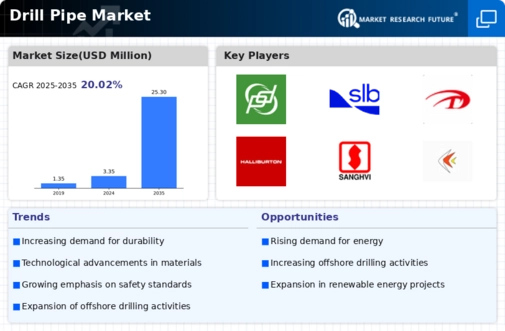

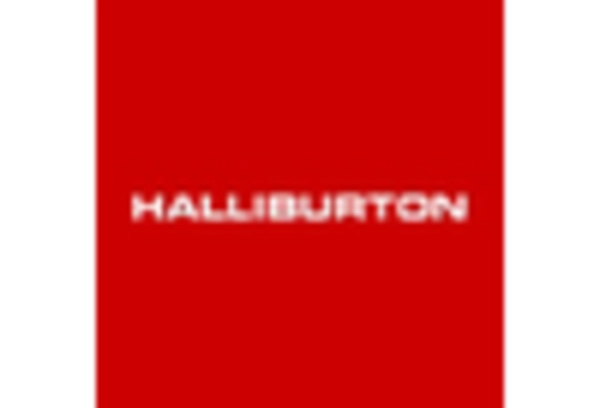
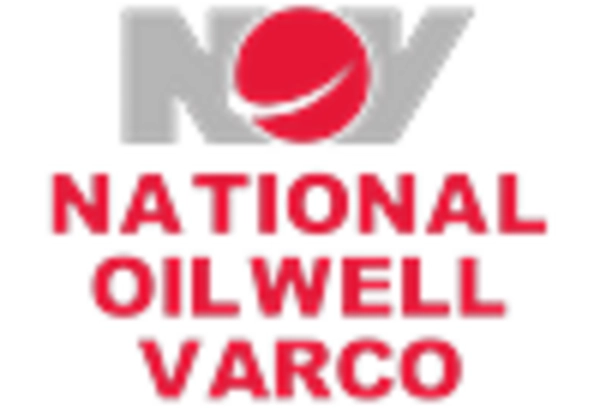
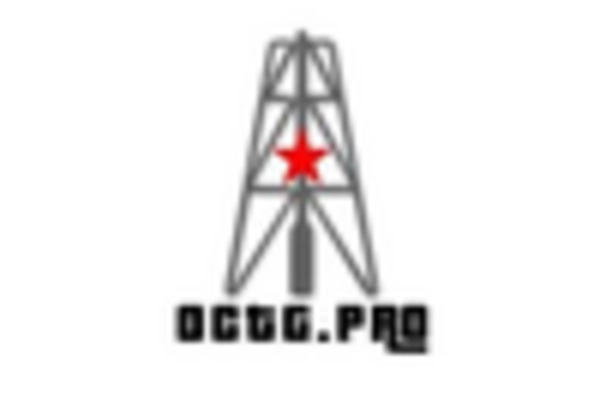
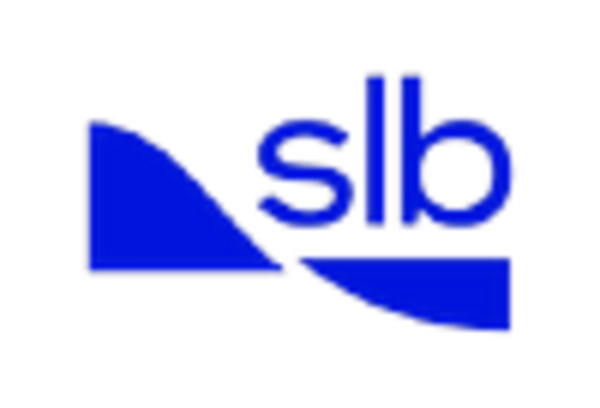










Leave a Comment